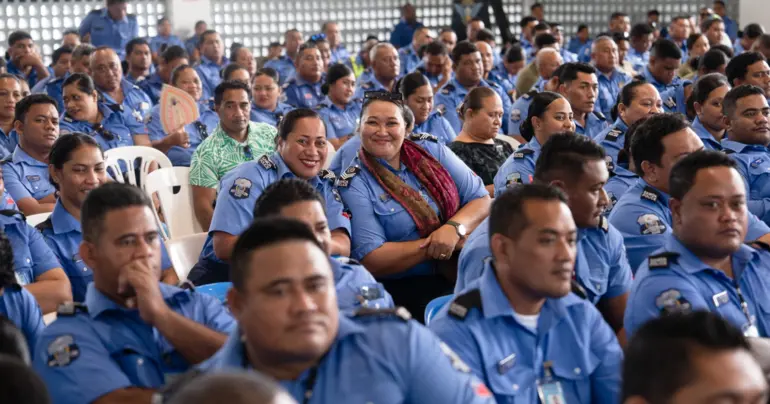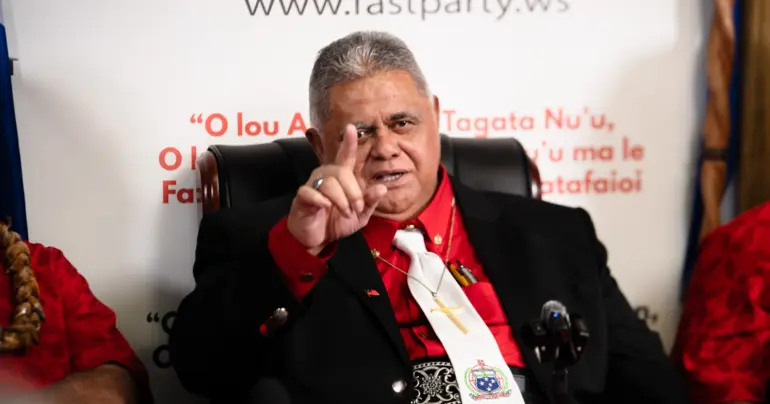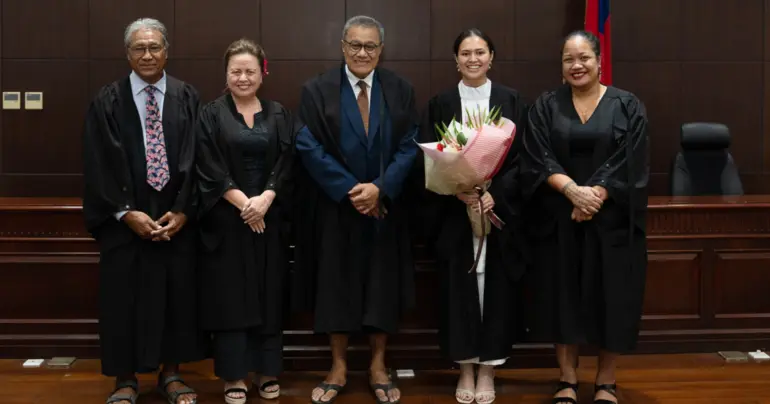Despite increased action, Samoa facing climate heat
 By Adel Fruean
•
27 April 2021, 11:00AM
By Adel Fruean
•
27 April 2021, 11:00AM
As the pace of global warming accelerates, small island states such as Samoa will face increased adverse effects, a Government report says.
Despite staring down the barrel of climate change’s impacts, Samoa remains on track to meet a United Nations (U.N.) “Sustainable Development Goal” (S.D.G.) requiring it to take action on combating climate change and its effects.
The conclusions are found in a Government review of Samoa’s progress in relation to a range of U.N. goals titled: “Samoa’s Second Voluntary National Review (V.N.R.) on the implementation of the Sustainable Development Goals.”
The report states that Samoa has already met four out of the eight S.D.G. indicators relating to combating climate change.
But Samoa’s key challenge remains its lack of control over climate change and its vulnerability to its adverse impacts.
“While Samoa contributes little to [rising Green House Gas emissions] we remain committed to implementing the Paris Agreement and investing in ambitious climate action,” the report says.
“Samoa continues to benefit from climate finance, and is confident in its efforts to meet its nationally determined contribution commitments.”
“Climate and disaster resilience remain a high and cross cutting national development priority issue for the sustainable development of Samoa.
“Given the ongoing vulnerability of Samoa to the adverse impacts of climate change and the continuous setbacks to socio-economic development due to these impacts and other external shocks, building climate resilience has remained a high priority.”
It also added that decades of national climate action and investment in adaptive planning, response and recovery has helped strengthen the country’s resilience to the risks and occurrences of climate induced events and natural disasters.
“For example, the establishment of a Multi Hazard Warning System will improve the quality and the timing of disseminated information to the public, and also the construction of the National Emergency Operation Centre to better coordinate our efforts in preparedness response and recovery,” the report states.
“There are less recorded deaths from disasters since 2009 and there is continued impact on people and the economy with negative growth recorded after Tropical Cyclone Evans in 2012 and TC Gita in 2018.
“Despite this, the economy and Samoa still manage to recover eventually by building back better.”
Samoa is also aiming to meet its nationally determined contribution (N.D.C.) for achieving 100 per cent of national electricity generation from 2025.
“With significant investments in major renewable energy projects for example on solar energy, hydro and biogas, Samoa is confident it can meet the target,” the report states.
“There have been marked improvements in terms of climate proofing all infrastructure and improved early warning systems, which help build adaptive capacity.
“Samoa has a comprehensive national disaster and risk management planning system in place and has successfully embedded disaster risk management into local governance.
“There are 94 Community/Village Disaster and Climate Management Response Plans and 41 Community Integrated Management Plans that are key to building resilience.”
The idea of building climate resilience has been brought into the mainstream including via its inclusion in the school curriculum from Early Childhood Education to the secondary level. These new educational additions include a Disaster and Energy Climate Change course at the National University Samoa and certificates on sustainable energy and climate change and disaster risk management.
“Climate Change Report Cards (provides more regular information on renewable energy, reforestation/mitigation, meteorology, and natural disasters; climate change adaptation projects, policies and reporting) are a fixed item on [...Cabinet Development Committee] C.D.C meetings
“Samoa has a National Climate Change Policy and a Climate Change Bill which are critical to ongoing efforts to address the adverse impacts of climate change.
“Samoa is [also] now preparing its Third National Communication and First Biennial Update Report, which are key to the fulfilment of its obligations under the United Nations Convention for Climate Change (U.N.F.C.C.C.).”
The report concludes that Samoa has over the past 15 years benefited significantly from multilateral and bilateral development financing to help build Government responses to climate change, including the creation of new infrastructure.
Sources of financing highlighted include the Global Environment Facility, the World Bank, the Asian Development Bank, Australia’s Department of Foreign Affairs and Trade, New Zealand’s Ministry of Foreign Affairs and Trade MFAT, the Secretariat of the Pacific Regional Environment Programme.
The establishment of the USD$65 million United Nations Green Climate Fund is also said to be helping the nation respond to climate induced events.
 By Adel Fruean
•
27 April 2021, 11:00AM
By Adel Fruean
•
27 April 2021, 11:00AM











